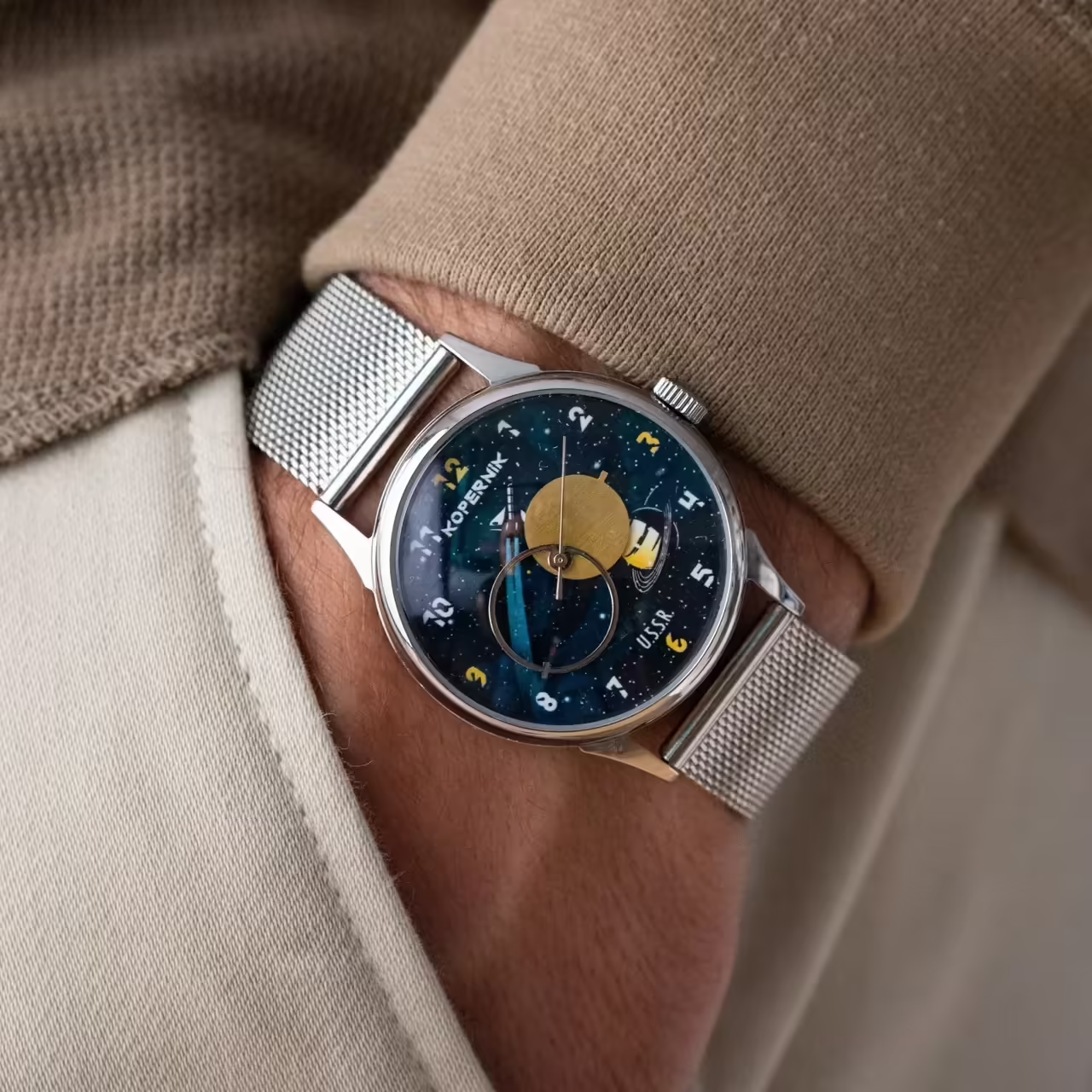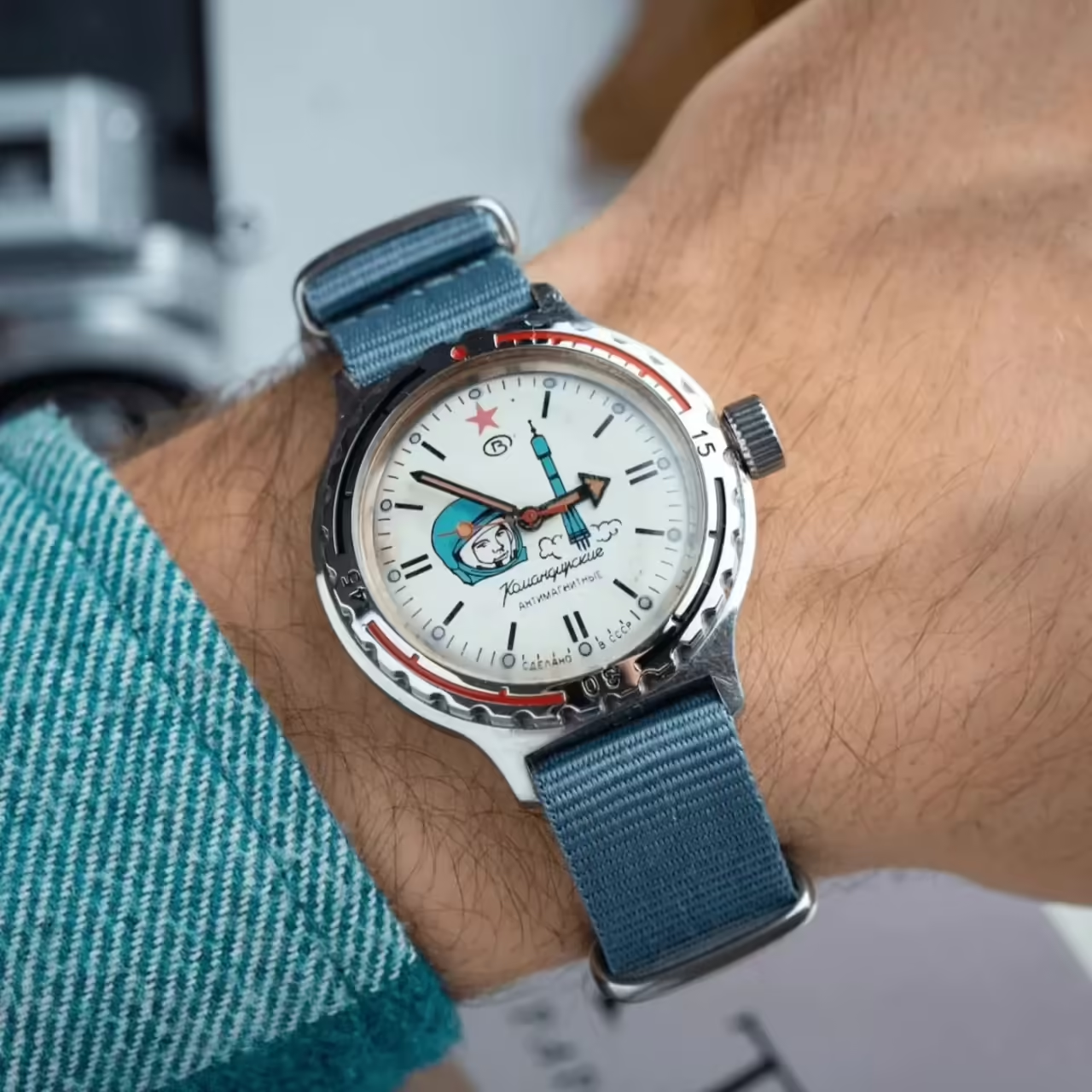
Dive into the fascinating world of Soviet horology, a period defined by its innovative technology and distinctive design aesthetics. Soviet watches, crafted behind the Iron Curtain, represent a vibrant, yet often overlooked, segment of global watchmaking history. Each timepiece not only offers a glimpse into a bygone era but also demonstrates the resourcefulness and creativity spurred by the unique socio-political context of the Soviet Union.
Early History of Soviet Watchmaking
The origin of Soviet watchmaking can be traced back to the tumultuous post-revolutionary period of the early 1920s. Amid economic challenges and rapid industrialization, the First State Watch Factory was established in Moscow in 1924, marking the birth of the industry. Originally manufacturing components for foreign pocket watches, it swiftly transitioned to the production of domestic wristwatches by the 1930s.
This evolution was fueled by a wave of technological ingenuity, driven by both necessity and ambition. The era was marked by a unique blend of imported technology, local craftsmanship, and state-driven innovation. The import of movements and machinery from the Dueber-Hampden Watch Company of Ohio in 1930, for instance, was a significant turning point, bolstering domestic production capabilities.
By the 1940s, the industry had matured significantly, boasting a repertoire of fully in-house produced watches, each meticulously crafted, reflecting the nationalistic spirit of self-reliance. This era also saw the birth of iconic brands such as Pobeda and Rodina, names that continue to resonate in the annals of horology. Their watches were not mere instruments of timekeeping; they were symbolic of the epoch, mirroring the aspirations and resilience of the people.
Influence of Foreign Watchmakers
The interplay between Soviet watchmakers and their international counterparts shaped the trajectory of this industry. Importing tools, machinery, and expertise from abroad accelerated the technological advancement of Soviet watchmaking. A crucial event was the acquisition of Dueber-Hampden Watch Company equipment, positioning the Soviet Union as a key player in the global watch industry.
Similarly, Swiss technology played a crucial role. The Second Moscow Watch Factory, birthed in the early 1940s, produced the iconic Kirovskie watch based on Swiss designs. Later, the collaboration with the Swiss brand Lip informed the creation of the Raketa movement, marking another milestone.
Japanese influence was also noteworthy, particularly in the realm of automatic movements. The Poljot 2416, a formidable automatic movement, showcased a Japanese-inspired design, encapsulating the global nature of horological innovation.
Iconic Soviet Watch Brands

Among the myriad Soviet watch brands, four stand out for their enduring legacy: Raketa, Poljot, Vostok, and Pobeda. Each has a distinctive narrative woven into the fabric of Soviet history.
Pobeda, named after the Russian word for ‘victory’, was launched in 1946, celebrating the end of World War II. Its most memorable model, Pobeda Red Twelve, featured a red twelve on the dial, a design anomaly that has endeared collectors worldwide.
Vostok, the brand synonymous with robustness, has a military lineage, offering watches capable of withstanding harsh conditions. Its Amphibia diver’s watch, equipped with a unique water-resistance system, remains a cult classic.
Poljot, meaning ‘flight’ in Russian, was at the forefront of Soviet horological innovation. Its Strela chronograph, famously worn by astronaut Alexei Leonov during the first spacewalk, holds a place of honor in watchmaking history.
Raketa, translating to ‘rocket’, symbolized the Soviet Union’s cosmic dreams. Among its eclectic lineup, the 24-hour Polar watch, designed for Arctic explorers to distinguish day from night, showcases the brand’s inventive spirit. Each of these brands narrates a unique chapter in the captivating tale of Soviet horology.
Soviet Watches in Space
Soviet watches boldly went where no timepiece had gone before: space. The space race became a new battleground for horological excellence. Poljot’s Strela watch, launched in the 1950s, was the first space watch, accompanying cosmonaut Alexei Leonov on his groundbreaking spacewalk in 1965. The robust chronograph encapsulated the technical prowess and ambition of the era.
Similarly, the Vostok Amphibia, conceived in the late 1960s, survived extreme conditions, serving Soviet naval forces and even reaching the International Space Station. It wasn’t merely a watch; it was a symbol of national pride and resilience.
Impact of Perestroika and the End of an Era
The winds of Perestroika in the late 1980s brought monumental changes for the Soviet watch industry. The liberalizing reforms, while opening the market, exposed the industry to fierce global competition. The nationalized watch factories found themselves ill-prepared to contend with the influx of inexpensive quartz watches from the West and Asia.
Many iconic brands faced decline and even closure. Yet, the era wasn’t merely one of loss; it was also one of transformation. The factories that survived, like Vostok, adapted, turning to the burgeoning market of watch collectors and enthusiasts. They navigated these challenging times with resilience, cherishing their rich history while forging a new path.
Collectability and Modern Revival
In recent years, Soviet watches have witnessed a surge in collectability, driven by their unique historical significance, technical innovation, and design aesthetics. Brands like Vostok, Poljot, and Raketa, have gained a cult-like following among watch enthusiasts worldwide.
The charm of Soviet watches lies not only in their intrinsic quality but also in the narratives they carry. They represent a snapshot of a bygone era, imbued with the spirit of resilience and innovation that defined Soviet history. Each timepiece is a conversation piece, providing collectors with a tangible connection to the past.
This renewed interest has led to a modern revival of some iconic brands. Raketa, for example, resumed production in the 21st century, blending its historical design elements with contemporary technology. The Raketa Avant-Garde watch, with its unique dial inspired by Russian Suprematism, is a testament to this.
The legacy of Soviet watches extends far beyond the confines of horology, reflecting the social, political, and technological narratives of an epoch. Each watch, a triumph of resilience and creativity, encapsulates the spirit of an era marked by remarkable change and innovation. As they enjoy a contemporary revival, these timepieces continue to intrigue, inspire, and inform, bridging the past and the future in each tick. Today, they stand as enduring symbols of Soviet ingenuity and a unique chapter in the annals of watchmaking history.







